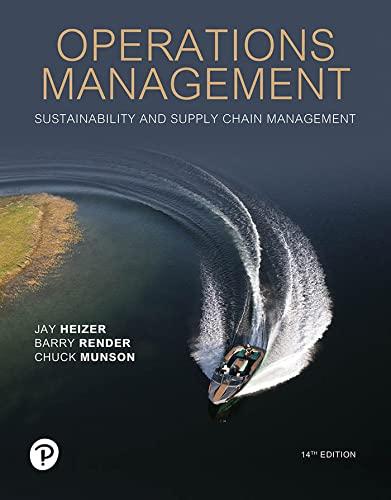When President Bob Collins began his career at Wheeled Coach, the worlds largest manufacturer of ambulances, there
Question:
When President Bob Collins began his career at Wheeled Coach, the world’s largest manufacturer of ambulances, there were only a handful of employees. Now the firm’s Florida plant has a workforce of 350. The physical plant has also expanded, with offices, R&D, final assembly, and wiring, cabinetry, and upholstery work cells in one large building. Growth has forced the painting work cell into a separate building, aluminum fabrication and body installation into another, inspection and shipping into a fourth, and warehousing into yet another. Like many other growing companies, Wheeled Coach was not able to design its facility from scratch. And although management realizes that material-handling costs are a little higher than an ideal layout would provide, Collins is pleased with the way the facility has evolved and employees have adapted. The aluminum cutting work cell lies adjacent to body fabrication, which, in turn, is located next to the body-installation work cell. And while the vehicle must be driven across a street to one building for painting and then to another for final assembly, at least the ambulance is on wheels. Collins is also satisfied with the flexibility shown in the design of the work cells. Cell construction is flexible and can accommodate changes in product mix and volume. In addition, work cells are typically small and movable, with many work benches and staging racks borne on wheels so that they can be easily rearranged and products transported to the assembly line. Assembly-line balancing is one key problem facing Wheeled Coach and every other repetitive manufacturer. Produced on a schedule calling for four 10-hour workdays per week, once an ambulance is on one of the six final assembly lines, it must move forward each day to the next workstation. Balancing just enough workers and tasks at each of the seven workstations is a never ending challenge. Too many workers end up running into each other; too few can’t finish an ambulance in seven days. Constant shifting of design and mix and improved analysis has led to frequent changes.
Discussion Questions
1. What analytical techniques are available to help a company like Wheeled Coach deal with layout problems?
2. What suggestions would you make to Bob Collins about his layout?
3. How would you measure the “efficiency” of this layout?
Step by Step Answer:

Operations Management Sustainability And Supply Chain Management
ISBN: 9780137476442
14th Edition
Authors: Jay Heizer, Barry Render, Chuck Munson





